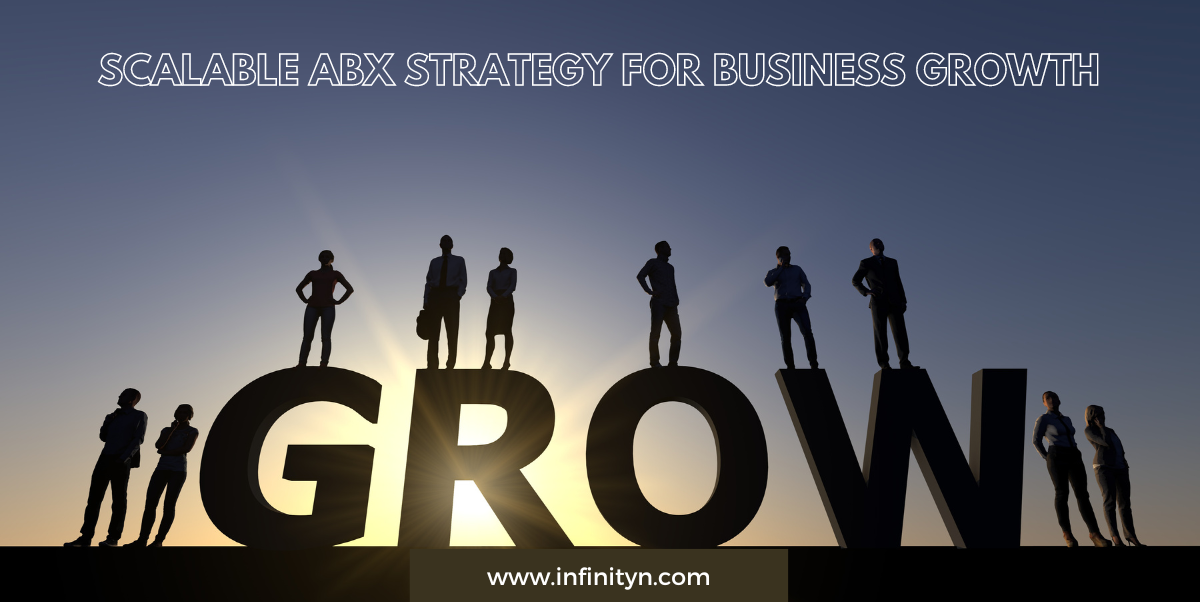A new business structure for scaling enterprise growth: Growth Process Outsourcing
Growth process outsourcing is BPO for complex sales and marketing processes. Business process outsourcing (BPO) is a familiar term for most in the...

A new business model for outsourcing enterprise growth activities: Growth Process Outsourcing!
It’s no news that outsourcing is a red-hot trend. However, we see an emerging sub-trend in an area that has not traditionally been regarded as a business function to be outsourced. This paper examines the possibilities and shows cases of outsourcing complex growth functions from enterprise sales and marketing to external providers.
Despite the growth of outsourced services having slowed down over the past few years, the global market size has doubled in total value. Between 2000 and 2019, the total valuation of services have risen to a staggering 92.5 billion dollars annually1. Outsourcing has been redrawing core business functions and, in many industries, and it has redefined the way business is done. Over the years, the outsourced business functions that have enjoyed the highest popularity have been changing; IT outsourcing has been making up a good chunk of the outsourcing pie, accounting for approximately two-thirds of all activities by contract value, according to Statista. However, IT outsourcing has not been rapidly growing in the 2010s, having even consolidated in some years of the past decade. The expansion in outsourcing has been driven by another segment.
1Source: Business process outsourcing (BPO) worldwide, 2019.
This segment, this outsourcing function that is showing a rapid increase year-on-year - more abrupt than any other functions - is customer experience/customer care. According to the above-cited Statista report, this segment is expected to almost double in size from an already impressive 17.45 billion dollars per year in 2017 to over 30 billion in just 10 years.
The expansion of this function is intriguing for us because it is an early indication of the rise of growth-process outsourcing (GPO): the outsourcing of B2B sales and marketing functions. To be fair, outsourcing sales and marketing activities aren’t at all entirely new: the most obvious “predecessor” of GPO is outsourcing telemarketing or telesales. However, telemarketing and telesales are only small pieces of the growth puzzle and they are generally inadequate for selling complex, high ACV products. Outsourcing B2B sales and marketing functions as a part of the growth process is qualitatively different, as we will see later.
Growth Process Outsourcing is a framework for outsourcing complex enterprise marketing and sales processes. In a B2B enterprise setting, marketing and sales are increasingly conducted in an account-based fashion, and account-based growth commonly refers to the “combined” stack of marketing, sales, and customer success activities.
In other words, GPO builds on the already established practice and framework of business process outsourcing and takes BPO to new grounds: scaling account-based marketing (ABM) and sales activities, which are also referred to as account-based growth activities. It complements, in an agile way, the account-based growth processes of enterprises.
GPO is similar to BPO in many ways, so it’s worth discussing the differences between the two concepts. A major difference between BPO and GPO is that most of the GPO elements follow a less exact process, and it also includes a higher element of research and consultative work. GPO blends research and execution and as such, it becomes somewhat different in nature from traditional BPO setups.
Other key differences are highlighted in the table below:
|
TRADITIONAL BPO |
GROWTH PROCESS OUTSOURCING |
|
|
GOAL, ORIENTATION |
Process-orientation |
Growth-KPI, sales pipeline, revenue orientation |
|
SCOPE |
Partial or entire processes |
Partial processes |
|
TEAM/ |
Large teams |
Smaller agile pods |
|
TYPICAL PROCESSES |
Customer service, telemarketing, administration |
Account-based intelligence, research, ABM, account-based sales development, customer success management |
|
MANAGEMENT MINDSET |
Process/waterfall approach |
Agile, flexible approach, growth mindset |
To understand the nature, significance, and possibilities of GPO, it’s worth briefly discussing the proven methodology of account-based growth.
Account-Based Growth (ABG) is a systematic process for aligned B2B marketing-sales initiatives in the enterprise sphere, especially the technology and service sector. ABG evolved from account-based marketing (ABM). ABM is a B2B marketing methodology that encourages shifting the marketing focus from lead generation to a more holistic, account-targeted, personalized, and relevant marketing that results in better buying experiences and is thus more effective.
We often refer to ABG as Agile ABG because of its nature. ABG requires multidisciplinary teams, runs in sprints, and is very similar in nature to agile methodologies known in software development and marketing. Because of its agile nature, ABG “sits well” in a tech-business setting, where it is usually deployed. In the remainder of the article, we will sometimes refer to ABG as Agile ABG.
While account-based marketing (ABM) has many successful applications and is regarded as the optimal B2B marketing methodology in high annual-contract value settings, it has one shortcoming: the original framework does not adequately address the issues around sales-marketing alignment, which is a common and major “complaint” of enterprise sales and marketing leaders. Lack of alignment between sales and marketing departments results in data- and information silos, leading to suboptimal campaigns in both departments.
Account-based growth comes to the rescue as a methodology that is more holistic in nature and encompasses both marketing and sales development processes and even the later stages of the customer journey: sales and customer success. ABG also aids in aligning goals, defining metrics, and minimizing silos between departments. On the one hand, account-based growth is a cure for teams running account-based marketing and experiencing inter-department misalignment. It is also a concise and straightforward framework for optimal B2B growth. In later stages of account-based growth, when customer success processes and teams are also involved in ABG projects, the result is an even more efficient growth cycle and a more satisfying buyer experience on the buyers’ end. Naturally, a more elevated customer experience also ends up fueling growth by making customer retention and upselling easier.
These are the high-level results and benefits of using the more holistic approach of account-based growth. To make it easier to grasp, we are listing some common activities that take place in the scope of ABG projects or sprints:
Agile Account-based Growth in its full form becomes a virtuous cycle, where sub-processes work in tandem and often run parallel to one another. The “account-based growth flywheel” can be depicted like this:
For enterprises looking to implement account-based growth, using an external consultancy or service provider is a viable approach. By its nature, ABG has a consultative side with “fixing broken parts” in sales and marketing and as such, it’s often better done by an “outside eye” that is void of any blind spots.
In addition, an external provider will likely have more experience implementing an Agile ABG program, which saves time and resources. Lack of resources is a third reason companies outsource; internal sales and marketing resources are often tied up in existing campaigns and initiatives and it can be nearly impossible to find the time, focus, and dedication for an ABG sprint internally.
The framework for cooperation in providing Agile ABG services (and subsequently using ABG services) is Growth-Process Outsourcing. The way companies have been using GPO is by doing agile, small-scale pilot projects that are limited to specific geographies or products or other segments of growth activities.
This is a common process for outsourcing a growth process:
 Agile pod is set up on the provider's side - a team of 3-5 multi-functional people, generally including at least a market research/data specialist, an account-based marketer, and sales developers.
Agile pod is set up on the provider's side - a team of 3-5 multi-functional people, generally including at least a market research/data specialist, an account-based marketer, and sales developers.

The pod’s members learn the product, industry, and culture of the client and familiarize themselves with the various data sources where account data is found.
 Interviews take place with account executives and relevant functional leaders to gain deeper, qualitative, and quantitative insight about the existing pipeline and current micro trends in the marketplace.
Interviews take place with account executives and relevant functional leaders to gain deeper, qualitative, and quantitative insight about the existing pipeline and current micro trends in the marketplace. The data specialist -armed with the insight from interviews launches account-based research to uncover more insight, opportunity, new product-prospect matches, analyzes pipelines, etc.
The data specialist -armed with the insight from interviews launches account-based research to uncover more insight, opportunity, new product-prospect matches, analyzes pipelines, etc. Based on the research’s findings, the pod decides with the client what measures to take: launch/modify existing marketing campaigns, launch outbound campaigns, and initiate personal outreach to prospects can all be viable options sequentially or simultaneously.
Based on the research’s findings, the pod decides with the client what measures to take: launch/modify existing marketing campaigns, launch outbound campaigns, and initiate personal outreach to prospects can all be viable options sequentially or simultaneously.
As we’re seeing a wider adoption of account-based marketing and rapid spread of marketing- and sales technology, so are problems popping up around inter-departmental alignment in growth teams, data silos, and sub-optimal performance on both sales- and marketing fronts. An agile approach, called account-based growth is a holistic mindset and methodology that focuses on integrating key growth processes and eliminating data- and information silos. ABG can be a challenge to implement from inside the organization. This opens the doors for the emergence of ABG as a consulting- and implementation service, namely Growth-Process Outsourcing. We see GPO as an immense opportunity for providers who have experience in marketing and sales services at the enterprise level, as well as for their clients.
EDITOR'S NOTE
In January 2022, the business model discussed in this article and the general modus operandi of Infinityn were awarded the prestigious IAOP Global Outsourcing 100 list Award.
If you want to get one step deeper into getting to know the methodology behind GPO, the next step would be to learn about Agile Account-Based Growth, and how it can help with Demand Generation.


Growth process outsourcing is BPO for complex sales and marketing processes. Business process outsourcing (BPO) is a familiar term for most in the...

If you’ve clicked on this article, there’s a fair chance you are considering outsourcing your sales, marketing, customer success and overall revenue...

Marketing goes beyond promotion. Marketing is creativity, profound planning, understanding of your audience, analysing data – especially nowadays,...

TOPO’s “2019 ACCOUNT BASED BENCHMARK REPORT” – which included 150 account-based organizations - showed that every participant reached or exceeded a...

“Every company wants to increase revenue.” That’s a pretty safe and agreeable statement to make.

How a simple visual can change the game for your organization’s intelligence efforts.

Discussion on how some technology enterprises are capitalizing on the downturn.

The beginning of the 2020s most definitely meant the beginning of a new era in many regards, including the world of business. Although exceptionally...

In the wake of unprecedented global challenges, the landscape of business has undergone a profound transformation. The era of uncertainty and chaos,...

What we call agile account-based marketing (AABM), is a newly emerging discipline. As such, the industry of marketing service providers - agencies...
Traditional lead generation methodologies are losing prominence as new approaches revolutionize the world of business process outsourcing (BPO). The...

Strategic Investment in Technology In the ever-evolving landscape of business, the journey from product ideation to market success is riddled with...